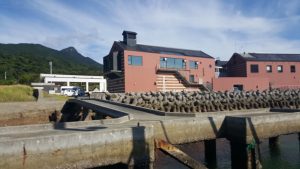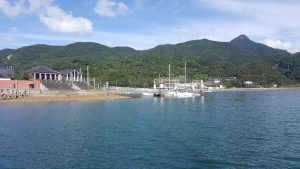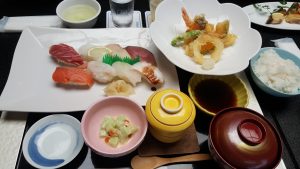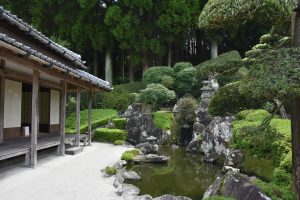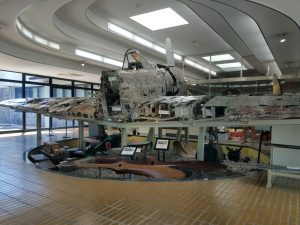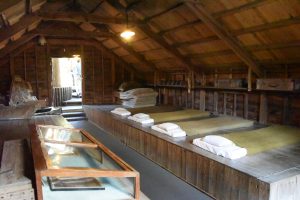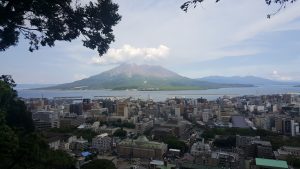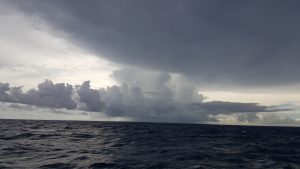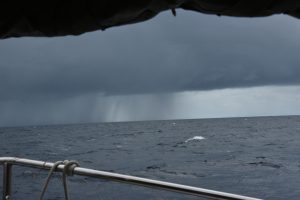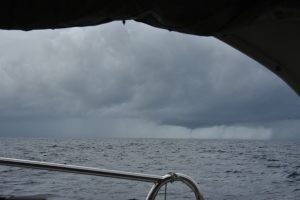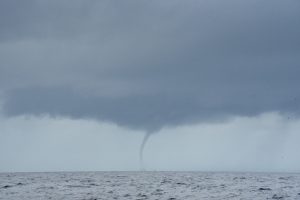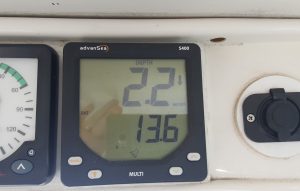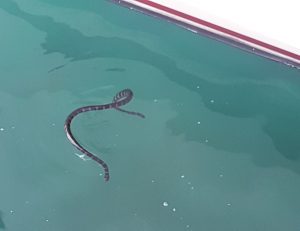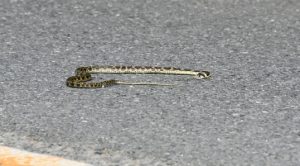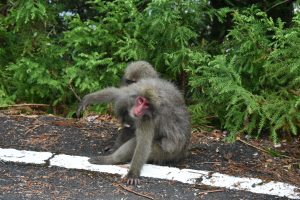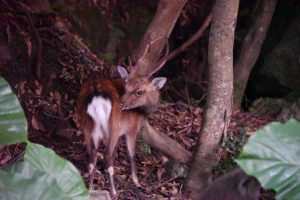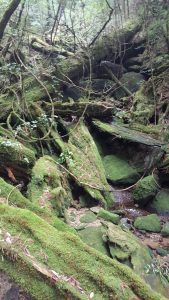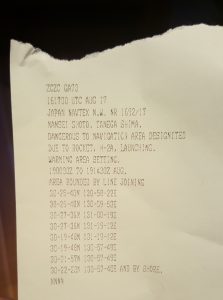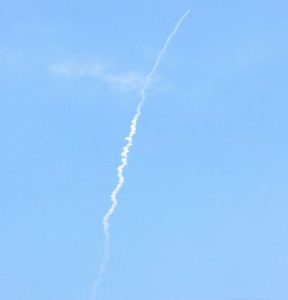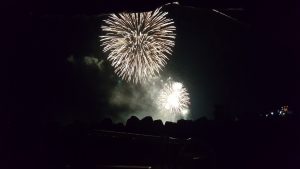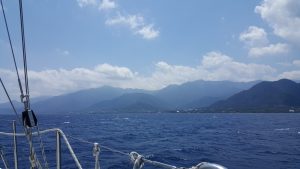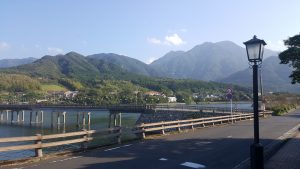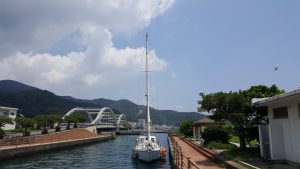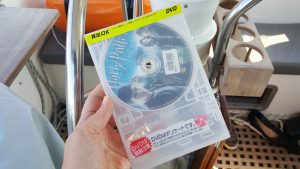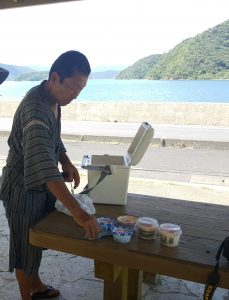From Makurazaki, we made our way to Kasasa along the west coast of Kyushu. We did not go there for the tiny town, but rather to experience some luxury for a change in the form of a floating pontoon (made for sailboats rather than work boats) and a proper shower! We had read about a hotel called Kasasa Ebisu which is sailboat friendly, and in fact has a pontoon specifically dedicated to sailors (you can just pay to moor, no need to get a hotel room). When we entered the small bay in question (for which there were no details on our C-Map chart plotter or anywhere else), we could see the hotel on the port side, and also a concrete pier which was “T-shaped” as the pontoon was meant to be. Lo and behold, it was not a floating pontoon at all though! It was extremely shallow around the pier, and we also could not manage to see any cleats onto which we could tie our lines, so we were rather puzzled as to how we should be able to secure the boat onto the pier. Just when we started to discuss our plan B for the night, a lady came running from the hotel and yelled that it was the wrong pier, and we should continue further around the corner. There was indeed a floating pontoon there, and one of the three spaces for boats was free. Later, we saw that the concrete pier that we had tried to tie ourselves onto first was almost completely submerged at high tide. Talk about mistakes!
While the cost of the mooring was rather high, it did include access to a Japanese onsen at the hotel. Not only did we have a shower, but we were also able to experience a hot spring bath with a lovely sunset view over the sea. We wanted to rent a car, and an employee of the hotel, Yamasaki-san, said the hotel would drive us to the rental shop the following morning and pick us up in the evening. At exactly 9 am as agreed, there was a nice car waiting for us, and Yamasaki-san himself drove us to the rental shop. It was much farther to drive than we had expected – 30 minutes from the hotel, meaning that Yamasaki-san had to spend 2 hours in total for the drop-off/pick-up service. When we tried to compensate him – and the hotel – for the ride, he refused to accept any payment. Knowing that we might be thirsty when we return, he had even bought us a bottle of peach water each. Such a lovely gesture, and such a kind man. When we left the Ebisu hotel the following morning, he came to the pier to wave us goodbye.
With our rental car, we first drove to Chiran where there are seven perfectly preserved samurai gardens that can be accessed in the old samurai quarters. After that, we visited the nearby site of the former airfield and training area for kamikaze pilots (or “tokko” pilots as the Japanese say). There is a museum at the site with, among other things, a very touching display of last letters (with their English translations) written by the kamikaze pilots. There were people crying when reading the letters, and we do not wonder why. To us, the visit not only highlighted one historical aspect of World War 2, but also gave us a very interesting glimpse into the Japanese culture and character. Finally, we drove to an observation area in Kagoshima City that has great views over the city and onto the Sakurajima volcano. It was a perfect day, naturally finished off by a visit to the hotel’s luxurious onsen.
